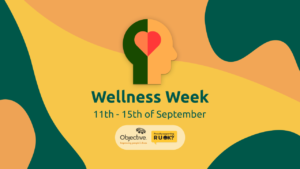I’ve been meaning to write this article for a long time, as my journey started in 2019. I come from Brazil and I have a bachelor degree in architecture. After working for three years as an Interior Designer in Sydney, I realised that this industry was no longer matched to my personal drive nor my career goals in terms of flexibility, income and progression.
I wanted to be able to help people and I wanted to be in the tech industry, as I saw people around me in tech with flexibility in work and great work culture. I discovered, by reading articles and talking to UXers, that the industry as a whole provides a positive work culture filled with empathetic and driven people.
These are the primary 8 things I learnt through this process:
01 – Transferable design skill set:
Through my research process I read a LinkedIn article about architects who transition to UX design. It all made sense, architecture is all about empathising with people, problem solving and creativity. This seemed to be a clear transition considering my skill set and I’d be able to create a positive impact on people’s lives with wide reach.
02 – Diverse industries are welcome:
I did an ‘elevate’ UX design course at the Academy Xi and the students came from different work backgrounds. Being surrounded by people from many different industries made me see how each one of us can contribute uniquely with our own values and prior knowledge.
03 – Being able to communicate effectively, verbally and visually, is important:
Brush up on those presentation skills, delivering projects to stakeholders will be an important part of your UX career. I completed a toastmasters course (a global public speaking group) to feel more comfortable doing presentations. I also did an online course to improve at putting a presentation deck together with clear visuals.
04 – Networking is your best friend:
I reached out to people like there’s no tomorrow. I was surprised with how kind people in the UX industry are. One of my first memories meeting someone in UX was visiting Melbourne and a UX designer agreed to meet up for coffee, I went to plenty of meet ups and I used LinkedIn as my main tool to approach people and start conversations. I’m telling you, it works!!
05 – Prepare yourself financially so you can focus on your UX career:
A lot of people prepare themselves financially so they can quit their jobs and invest in a 10 week full time UX course. I was working full time as an interior designer so I completed an alternative course. I did a part-time 10 week course at the Academy Xi in the evenings. I think my transition could have been smoother if I had dedicated all my time to this career move.
06 – Just say ‘yes’ to opportunities:
Immediately after I finished the course, I was invited to work on a project for a startup. That’s when the fun began, I was working full time hours at my job and working in the evenings and weekends on this UX project. It was tough, but I don’t regret it.
I was then invited to do an internship in a UX design agency. That’s when I realised, to be able to succeed in this new career path, I’d need to dedicate all my time to it. I then quit my interior design job and I devoted my time to my internship, networking and upskilling. These helped me to learn a lot about the industry and to feel more confident during interviews.
07 – Be prepared for rejections:
Interviewing can be scary and you’ll often feel down. Remember, there’s nothing wrong with you! You don’t know what’s happening behind closed doors, the tech companies and agencies are simply interviewing A LOT of people.
My transition happened through COVID. I had so many rejections. I kept asking myself if I was doing the right thing, if I should really transition to UX but I persisted.
08 – Don’t give up!!
I had a few different roles until I landed a job as a UX Research and Design consultant at Objective Experience. I’ve been in this role for over 2 years and I couldn’t be happier with my decision to change to a new industry.
Transitioning to UX wasn’t easy, I worked on so many projects, for so many hours and I became a more resilient person. For all the Junior UX designers out there, be persistent, be resilient and network.
Thank you for reading about my career journey. Please reach out, I’m excited to have a chat with anyone who is considering or is currently transitioning to UX.


